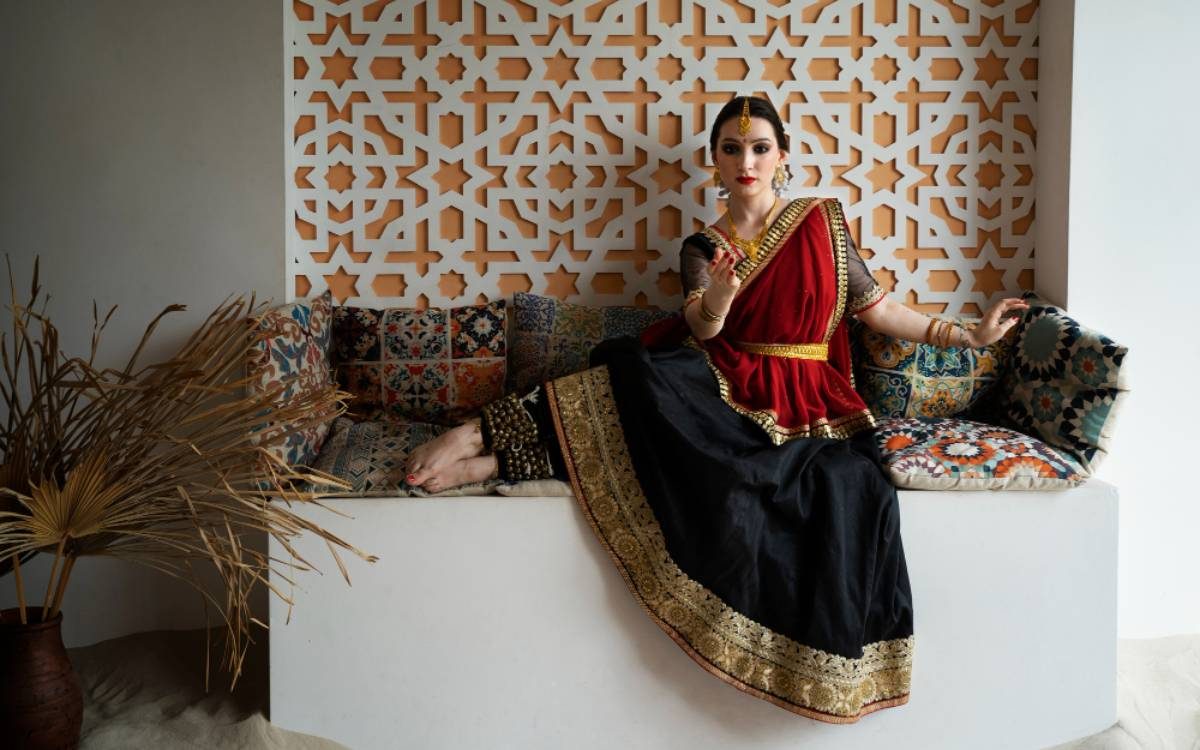Ethnic wear, a tapestry woven with threads of tradition, culture, and artistry, stands as a testament to the timeless elegance that transcends generations. Rooted in centuries of history, ethnic wear embodies the essence of diverse cultures, each piece narrating stories of heritage, craftsmanship, and identity. This rich tapestry is not just about clothing; it is a celebration of cultural legacy and an expression of individuality. From the vibrant saris of India to the intricate kimonos of Japan, ethnic wear captures the soul of civilizations, offering a glimpse into the past while remaining relevant in the modern world.
Contents
The Historical Significance of Ethnic Wear:
Ethnic wear is deeply intertwined with the historical and cultural fabric of societies. Each garment carries the weight of tradition, often reflecting the socio-economic conditions, religious beliefs, and artistic expressions of its time. For instance, the Indian sari, with its origins tracing back to the Indus Valley Civilization, is a symbol of grace and femininity. The intricate weaves and patterns of saris from different regions of India tell tales of local craftsmanship and cultural influences. Similarly, the kimono, an emblem of Japanese culture, has evolved over centuries, with its designs and colors signifying various occasions and seasons.
Craftsmanship and Artistry:
The creation of ethnic wear is an art form that requires immense skill and precision. Artisans, often inheriting their craft from previous generations, invest hours, sometimes even months, into crafting a single piece of clothing. Take, for example, the Banarasi sari from India, renowned for its opulent brocades and intricate designs. Weavers meticulously craft these saris using silk threads interwoven with gold or silver, resulting in a masterpiece that exudes luxury and elegance. Each motif, whether it is floral, paisley, or geometric, is a reflection of the artisan’s creativity and expertise.
In Morocco, the traditional kaftan showcases the artistry of hand-embroidery and beadwork. Each kaftan is a unique creation, adorned with elaborate patterns that represent the wearer’s social status and regional identity. The intricate handiwork involved in creating these garments is a testament to the dedication and passion of the artisans, preserving their cultural heritage through their craft.
Ethnic Wear in Modern Fashion:
In today’s globalized world, ethnic wear has transcended geographical boundaries, finding its place in contemporary fashion. Designers worldwide draw inspiration from traditional garments, incorporating elements of ethnic wear into modern silhouettes. This fusion of tradition and modernity has given rise to a new wave of fashion that celebrates cultural diversity while appealing to a global audience.
Indian fashion designer Sabyasachi Mukherjee, known for his revival of traditional Indian textiles and techniques, has brought ethnic wear to the forefront of international fashion. His creations, often seen on celebrities and fashion enthusiasts, blend traditional craftsmanship with modern aesthetics, making ethnic wear accessible and fashionable.
Similarly, Japanese designer Yohji Yamamoto’s work often features elements of the kimono, reimagined in contemporary styles. By merging traditional Japanese techniques with avant-garde designs, Yamamoto has introduced the beauty of ethnic wear to the global fashion scene, demonstrating its timeless appeal.
The Cultural Significance of Ethnic Wear:
Ethnic wear is not just a form of clothing; it is a cultural identity. It reflects the customs, traditions, and values of a community, serving as a visual representation of its heritage. Wearing ethnic attire is often a way to honor one’s roots and maintain a connection to one’s cultural heritage.
In India, wearing a sari or a kurta during festivals and celebrations is a way to pay homage to tradition and express cultural pride. Each region in India has its unique style of ethnic wear, from the vibrant lehengas of Rajasthan to the elegant salwar kameez of Punjab. These garments are not only a reflection of regional identity but also a means of preserving cultural heritage in a rapidly changing world.
In African cultures, traditional attire such as the Nigerian agbada or the Ghanaian kente cloth holds deep cultural significance. These garments are often worn during important ceremonies and celebrations, symbolizing unity, pride, and respect for tradition. The vibrant colors and intricate patterns of African ethnic wear are a testament to the rich cultural diversity and artistic heritage of the continent.
The Sustainability of Ethnic Wear:
In an era where sustainability is becoming increasingly important, ethnic wear offers a sustainable alternative to fast fashion. Many traditional garments are handcrafted using natural fibers and dyes, promoting eco-friendly practices and reducing the carbon footprint. The emphasis on quality over quantity in ethnic wear ensures that these garments are durable and long-lasting, encouraging a shift away from the throwaway culture of modern fashion.
The resurgence of handloom and handcrafted textiles in countries like India has also contributed to the revival of traditional crafts and the empowerment of artisans. By choosing ethnic wear, consumers can support sustainable fashion practices and contribute to the preservation of cultural heritage.
Ethnic Wear: A Celebration of Diversity
One of the most beautiful aspects of ethnic wear is its ability to celebrate diversity. Each piece of ethnic clothing is a reflection of the unique traditions and customs of a community. The intricate patterns, vibrant colors, and distinctive styles of ethnic wear showcase the richness and diversity of cultures around the world.
In the Middle East, the abaya, a traditional garment worn by women, is a symbol of modesty and cultural identity. While the abaya has evolved over time, with modern designs incorporating contemporary elements, it remains a powerful symbol of cultural heritage and tradition. The intricate embroidery and embellishments on the abaya reflect the artistic heritage of the region, making it a cherished piece of ethnic wear.
In Latin America, traditional garments such as the Mexican huipil or the Peruvian poncho are a celebration of indigenous culture and craftsmanship. These garments are often adorned with colorful patterns and intricate designs that tell stories of local folklore and traditions. Wearing these traditional garments is a way to honor and celebrate the rich cultural heritage of the region.
Conclusion:
The rich tapestry of ethnic wear is a celebration of timeless elegance and cultural heritage. Each piece of ethnic clothing is a testament to the craftsmanship, artistry, and cultural identity of a community. From the intricate weaves of Indian saris to the elaborate embroidery of Moroccan kaftans, ethnic wear embodies the essence of tradition and individuality.
In a rapidly changing world, ethnic wear serves as a reminder of the importance of preserving cultural heritage and celebrating diversity. By embracing ethnic wear, we can honor our roots, support sustainable fashion practices, and celebrate the rich cultural tapestry that defines our world. The timeless elegance of ethnic wear continues to inspire and captivate, reminding us of the beauty and significance of our cultural heritage.






